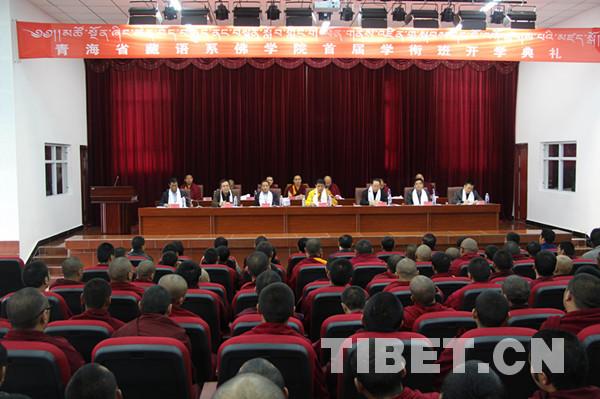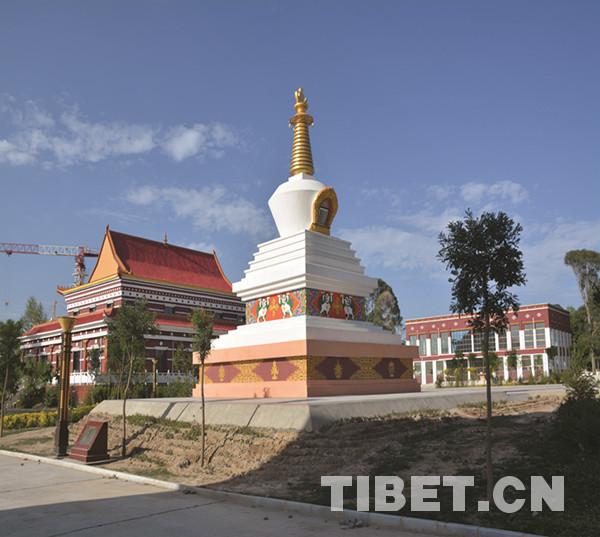Qinghai Tibetan Buddhism College recruits 120 monks

The opening ceremony of 2016 Tibetan Buddhism elementary and intermediate academic class took place at Qinghai Tibetan Buddhism College recently. It is reported that 404 monks registered from Qinghai's five Tibetan Buddhist sects, and after examinations 120 were chosen. The four year course covers three main areas: Tibetan Buddhist doctrines, Tibetan grammar and modern education.

The academic title system of Tibetan Buddhism stemmed from the Gelug sect and the highest academic title is called Tuoranpa, which is equivalent to a doctorate. Apart from the Gelug sect, other Tibetan Buddhist sects are yet to form an authoritative evaluation system. In recent years, Tibetan Buddhism has become increasingly accepted in society. Exchange between monks and the outside world and between monks from different sects has become more frequent. This requires a religious academic institution that combines modern and traditional elements in training religious talent. As a result, the college of Buddhism and the academic examination emerged.
While retaining the classic teaching and research of Tibetan Buddhism, the curriculum also includes some modern courses such as mathematics, computing, social knowledge, laws and regulations and others. It is designed to provide better integration into society for those monks who haven’t been in wide contact with society. Liu Peng, vice president of High-level Tibetan Buddhism College of China, said, “Many monks have a deep knowledge of Buddhism, but without a recognized qualifications, they can only talk about their primary or junior high school experience with others. The aim of establishing an academic system is to improve standardization of the Tibetan Buddhism academic system, so that the degrees of religious people become socially acceptable.”
It is reported that Qinghai Tibetan Buddhism College invited three senior sutra masters and other teachers to form a group for assigning examination topics. They developed three different topics for the different sects and varied levels of Buddhist theory. The exam is made up of two parts: debating the scriptures (oral) and a written part. Debating the scriptures involves Buddhist theory and the written part involves Tibetan grammar and current affairs, with each part constituting 70 percent, 20 percent and 10 percent of the final result respectively. Students were chosen in accordance with examination ranking and those that weren’t chosen this year said they will take the exam again next time.

Qinghai Tibetan Buddhism College is a religious college that was founded by the 10th Panchen Lama in September 1986 at the Tar Monastery, Qinghai. It implements the new academic title system of Tibetan Buddhism and can award the “Zhiranpa” and “Chanranpa” elementary and intermediate academic titles. In 2014 the state invested 116 million yuan in building a new campus for the Buddhist College in Guide County, Hainan Tibetan Autonomous Prefecture, Qinghai Province, which was put into use in March 2016.
Source: China Tibet Online
Editing and Translation: China Tibet Online
Your Comment
Name E-mailRelated News
-
;
-
-

-
141 monks graduate from Tibet Buddhism College
A total of 141 monks from 131 monasteries in Tibet Autonomous Region and the other four Tibetan-inhabited areas from Gansu, Sichuan, Qinghai and Yunnan provinces) graduated from Tibet Buddhism College after finishing two-year study, Jul. 10.
-
-
-

-
Tibetan Buddhism College celebrates Losar in Beijing
Monks of the High-level Tibetan Buddhism College of China celebrated the forthcoming Tibetan New Year (Losar) of the Wooden Sheep, as well as the Chinese New Year in Beijing.
-
-
-

-
11th Panchen Lama blesses graduates in High-level Tibetan Buddhism
The 11th Panchen Lama, Bainqen Erdini Qoigyijabu, on May 18th blessed monks with intermediate and advanced level Tibetan Buddhism degrees by conducting a head-touching ritual in the Xihuang Temple of Beijing.
-
Based in Lhasa, Tibet Vista is a Tibet travel agency that specialized in Tibet permit, and Tibet tours for both private and group travelers at a local price!
•4 Days Lhasa City Group Tour from USD 460 •8 Days Everest Base Camp Group Tour from USD 850 •15 Days Mt.Kailash Group Tour from USD 1780 •2016 Tibet Train Tours from Beijing, Shanghai, Chengdu, Xining,etc










